There are few players in baseball right now where my outlook has shifted as dramatically as it has for Sonny Gray. After his move to the Yankees in 2017, he had a pretty disastrous 2018. The 4.90 ERA left a lot to be desired, and with a move to another hitter-friendly park with the Reds in 2019, I didn’t think things would get much better. I was wrong.
Gray returned to his peak form that he showed with the A’s, posting a 2.87 ERA with 205 strikeouts in 175.1 innings for the Reds! He’s already following that up with a dominant 2020. As of August 23, 2020, he is at a 2.21 ERA with 51 strikeouts in 36.2 innings with a sub-1.00 WHIP to throw in there! As is always the question, what changed? For Gray, the answer is…not really that much.
Matt Wallach did a deep dive on Gray last year as he was surging with the Reds. It is an interesting read, and while this article will continue to look at the slider Gray has talked about and Wallach expanded upon, we will also take a novel look at the improvement to his sinker and how it has been a key to Gray’s success.
Trouble With the Yankees
As previously mentioned, Gray struggled with the Yankees. He had a 4.90 ERA and 1.50 WHIP, which aside from his struggles in 2016, this was uncharacteristic of him. Gray is consistently low ERA and low WHIP pitcher. According to Gray, the reason for this was that the Yankees wanted him to throw his slider much more than he felt comfortable. Looking at his arsenal, this is a somewhat confusing statement.
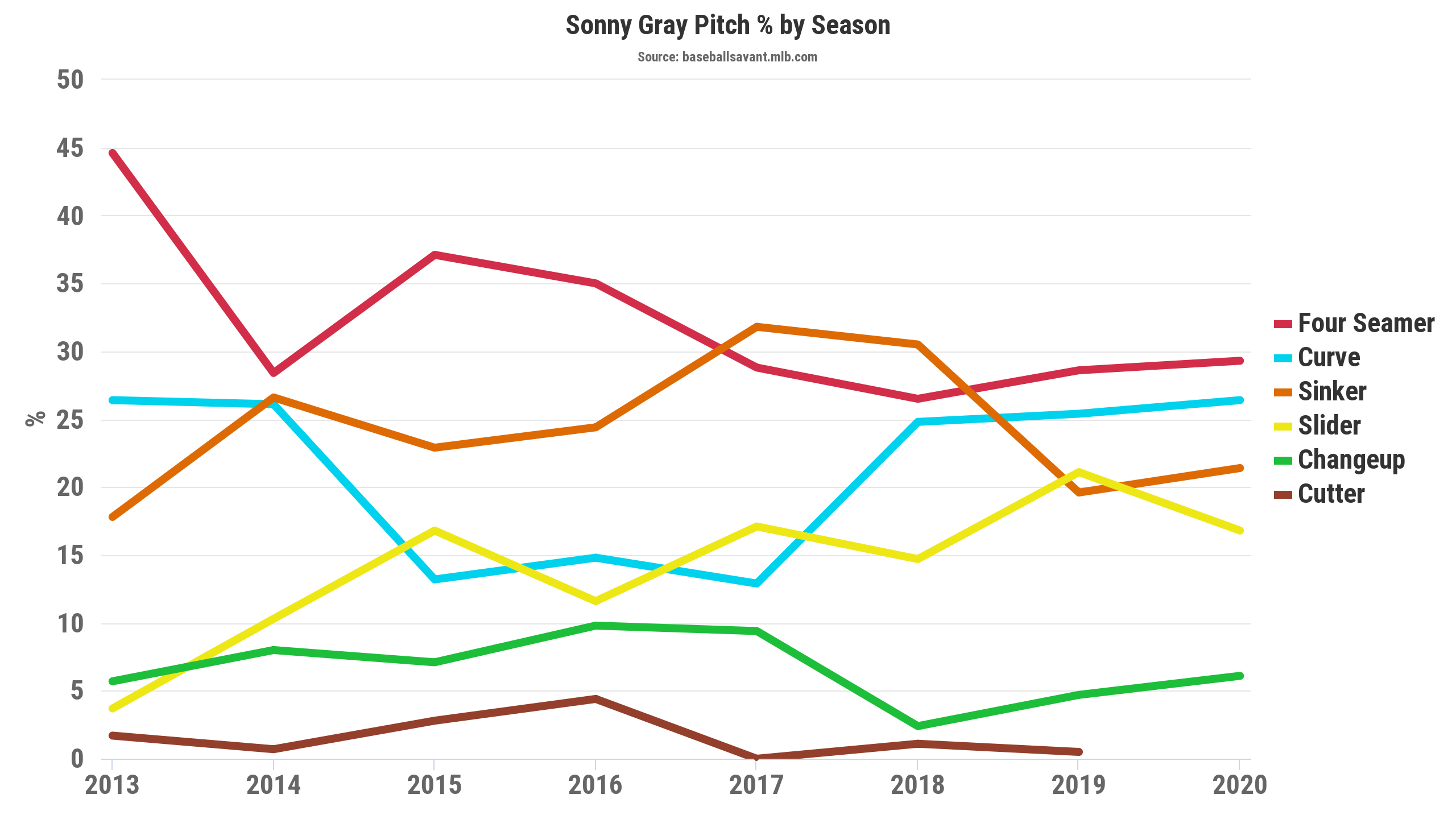
As we can see, the slider usage actually spiked after his move to the Reds in 2019. The sinker was the pitch that was reduced in usage upon arriving in Cincinnati.
The Arsenal
What should we make, then, of Gray’s negative comments about his slider and his subsequent increase in usage after leaving the Yankees? Did it develop into a more effective pitch in Cincinnati?
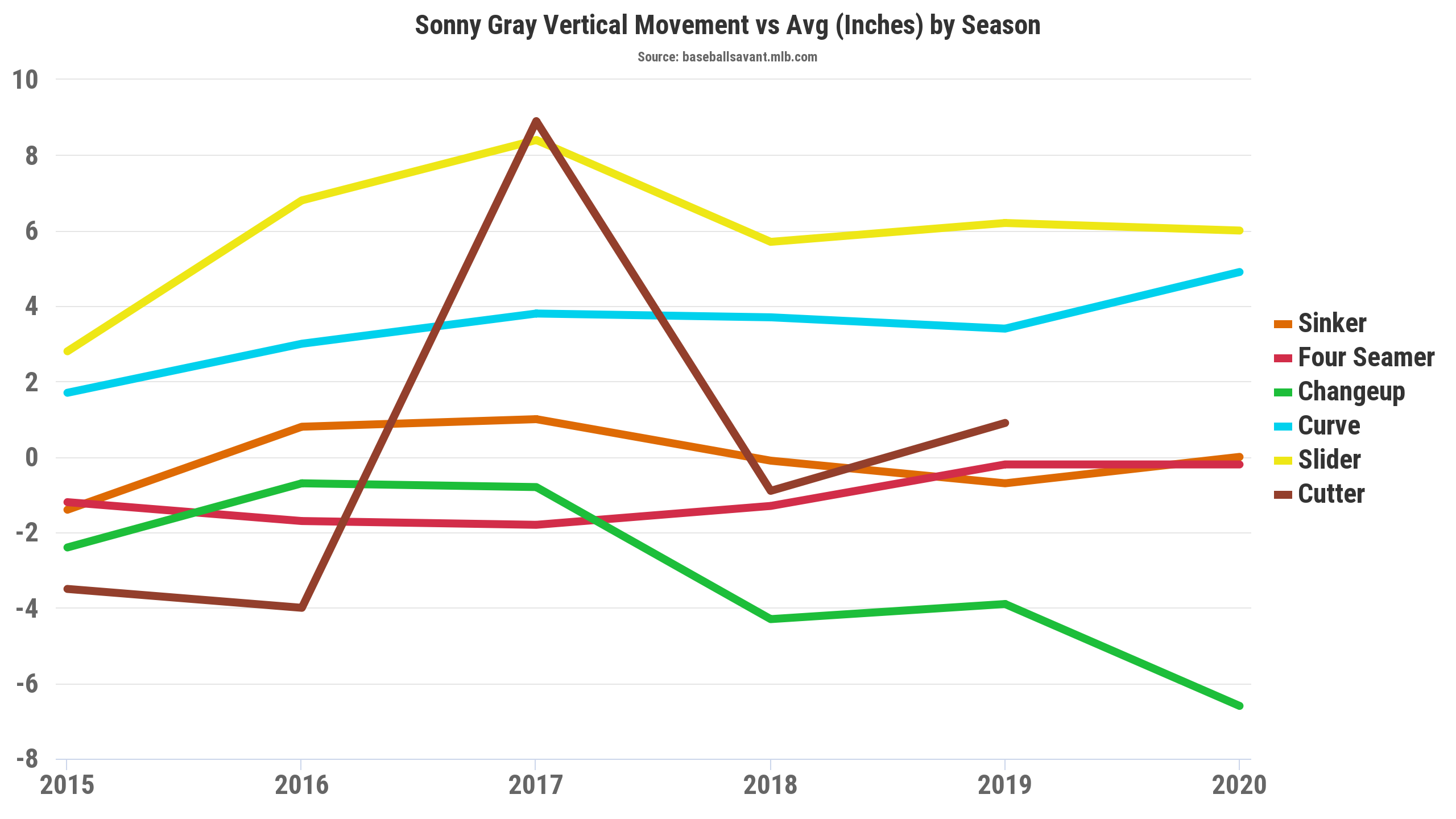
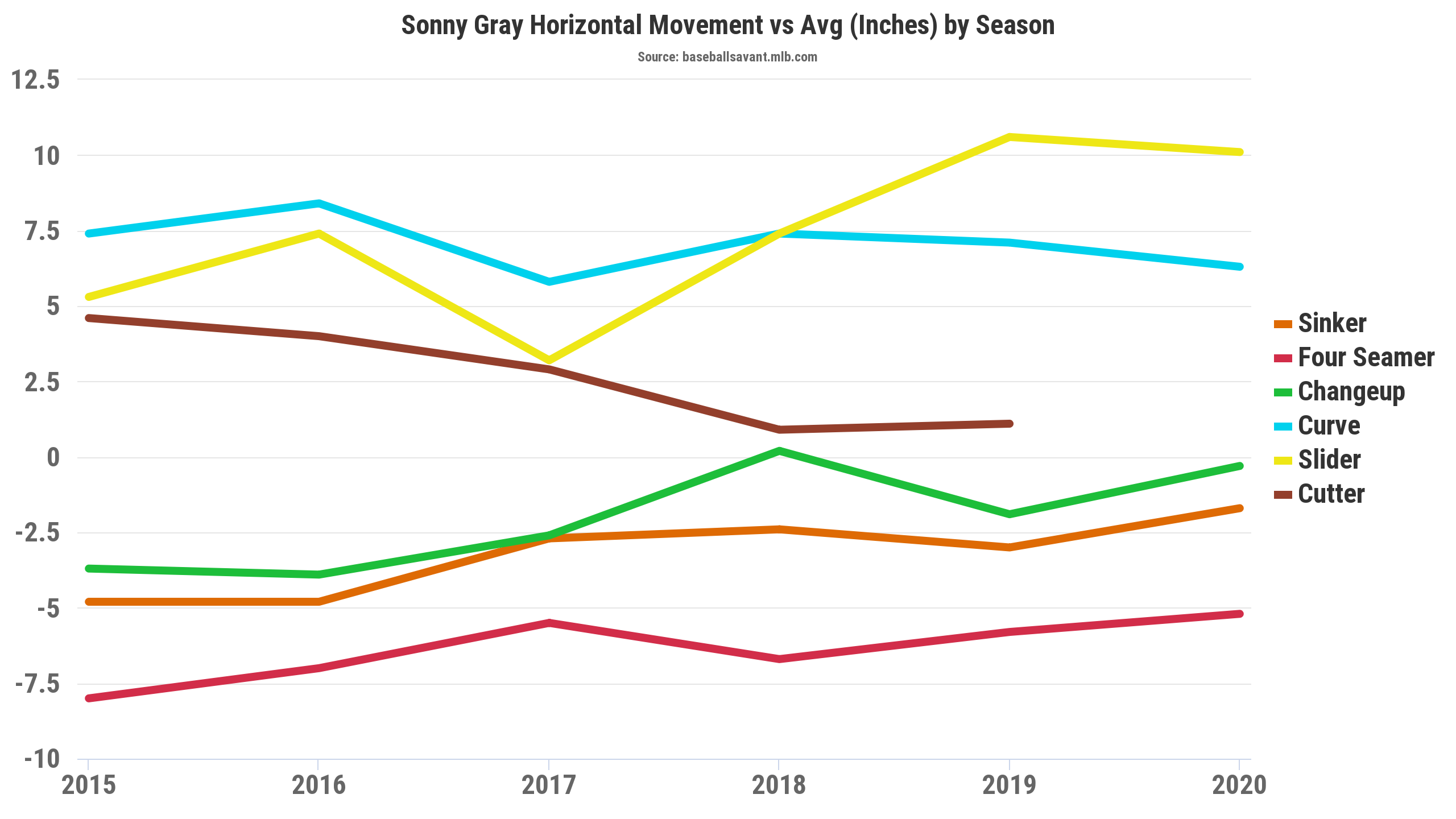
Both the vertical and horizontal movement of his slider are significantly greater than the average. On one hand, this is a good thing. You don’t want your slider to flatten out and lack movement; those get crushed. On the other, this could lead to control issues that Gray mentioned in his comments about his slider. If we look at the locations of the sliders from 2018 with the Yankees to 2019 with the Reds there are some differences. One thing we can see in 2019 is that the slider varies a lot more in where it is located. This could mean that they are flattening out less, which his slider being flat is something that Gray complained of about his 2018 pitch.
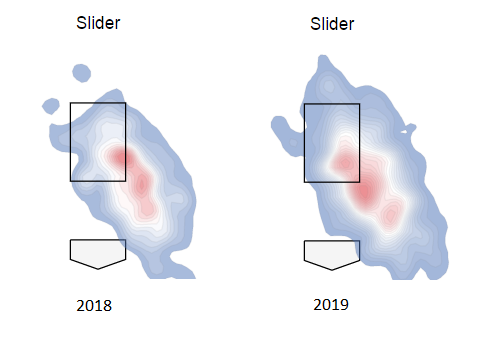
Honestly, they’re not a much different pitch in terms of outcomes. Its BA/xBA was .185/.176 in 2018 and .117/.160 in 2019 with almost identical Whiff rates. It’s not really the slider that caused Gray’s troubles in 2018, which is pretty easy to see when you look at just how filthy it is.
As Wallach mentioned in last year’s Going Deep piece on Gray, the slider and curve are in a league of their own. He notes the incredible increase in spin rate to both breaking pitches. This is true, but the slider and curve were still effective in 2018. They certainly got much better in 2019, but they weren’t the cause of Gray’s struggles in 2018.
The most apparent issue in Gray’s arsenal is his fastball. The spin rate on it is actually great, but the results are lackluster. The BA/xBA on it was .339/.343 in 2018 and .319/.284 in 2019. Even though there was improvement, it was slight and leaves it still as an ineffective pitch. The Whiff rate actually decreased on the fastball in 2019.
The Differences
On the pitch arsenal level, it looks like Sonny Gray is pretty much the same pitcher he was for the Yankees in 2018 as he is now. Then, how do we explain going from a mediocre 4.90 ERA to a stellar 2.87 ERA?
For one, Gray is striking out more batters than he ever has. Before 2019, he was never really a strikeout pitcher. His K/9 never went above 8.50 from 2014 to 2018. In 2019, it spiked to 10.52, and it’s already at 12.52 in 2020! His swinging-strike rate did improve in 2019, going from 10.1% to 11.3%. Wallach also noted this, but the sinker was understated in the increased strikeout success. Most of this swinging-strike improvement came by way of his sinker, and the only major difference for the pitch was that the spin rate went from 2310 to 2441. Even though that may not seem like a huge improvement, look at the graph below to see the massive improvement visually. The rest of his pitches generated about the same amount of swing-and-miss.
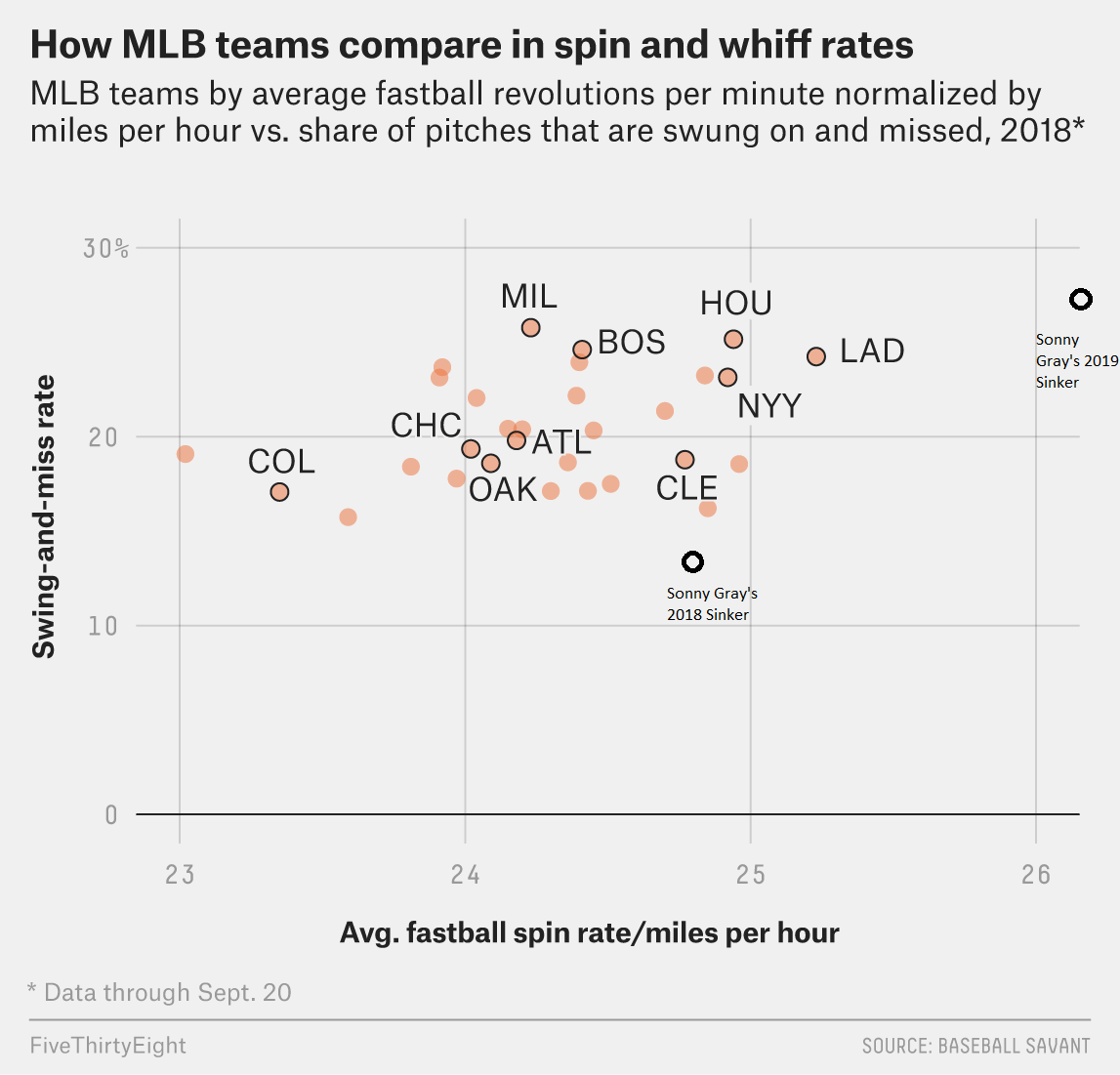
The other major difference for Gray is that he significantly decreased the amount of line drives hit off of him. One of the biggest issues for Gray in 2018 was that he suffered from a horrendous .326 BABIP. This was primarily due to a new career-high line drive rate of 22.9%, according to FanGraphs. The line drive rate decreased significantly in 2019, according to both FanGraphs and Baseball Savant, and with it, the BABIP came back down to “normal” Sonny Gray levels at .255.
It’s a fascinating case, because you can look at almost everything under the hood for Gray, and the only differences are the improved sinker and the decreased line drive rate. Both returned Gray to his ace-like form for the Reds, and he is already continuing his dominance in 2020. In appreciation of that sinker, let’s have it “play us out”.
Photo by Brian Rothmuller from Icon Sportswire | Adapted by Zach Ennis (@zachennis on Twitter and Instagram)


Really well done and interesting article Lucas. I was wondering when we would see a piece on Sonny Gray this year. His story is curious because of the ups and downs his career has taken since his early days with the A’s. He has become the pitching equivalent of the great hitter that comes to bat and you just cant leave the room because you want to see what they do. Not a Reds fan but, I really enjoy watching him pitch. You did a great job of showcasing his pitch arsenal. The Gif of Niko Goodrum contorting really demonstrates what kind of dominance Gray can unleash. That tailing fastball to a left-handed hitter is one of the most difficult pitches to execute because so many bad things can go wrong with the pitch. It must be precise or you risk hitting the batter or worse if it is flat and over the plate it is going to wind up in the seats.
Any chance you could do a story on what has led to Gray’s surge in confidence? He is a fierce competitor with an interesting history how he grew up with his Dad as a huge Reds fan. Overcome some really tough times to emerge as one of the best in the game. I think that is the other fascinating aspect of his come back and demonstrates who he is. Also, wonder how much his time with Trevor Bauer, Curt Casali, Derek Johnson, etc. have allowed him to find another level in Cincinnati. Also, wonder about how pitching in the Great American Ballpark has changed his approach. He seems focused on striking guys out and limiting damage which is a strategy Bauer uses as well and seems to work in a park that punishes poor pitching.
One last comment, Pitcher List has been one of my favorite sources for really well informed articles. I think it has to be a struggle to increase content and maintain top notch well written articles. This type of article is why I read Pitcher List. So thanks.